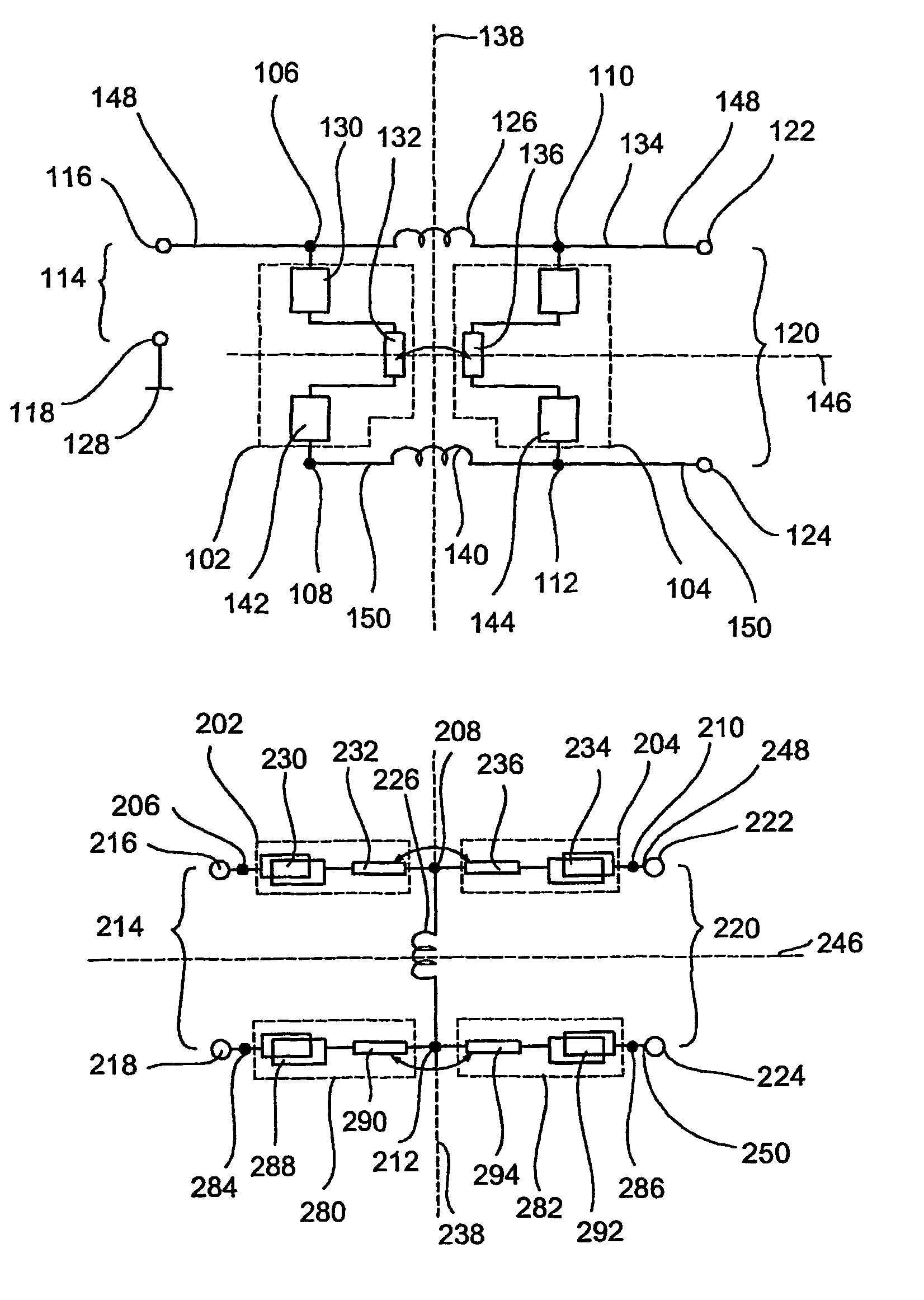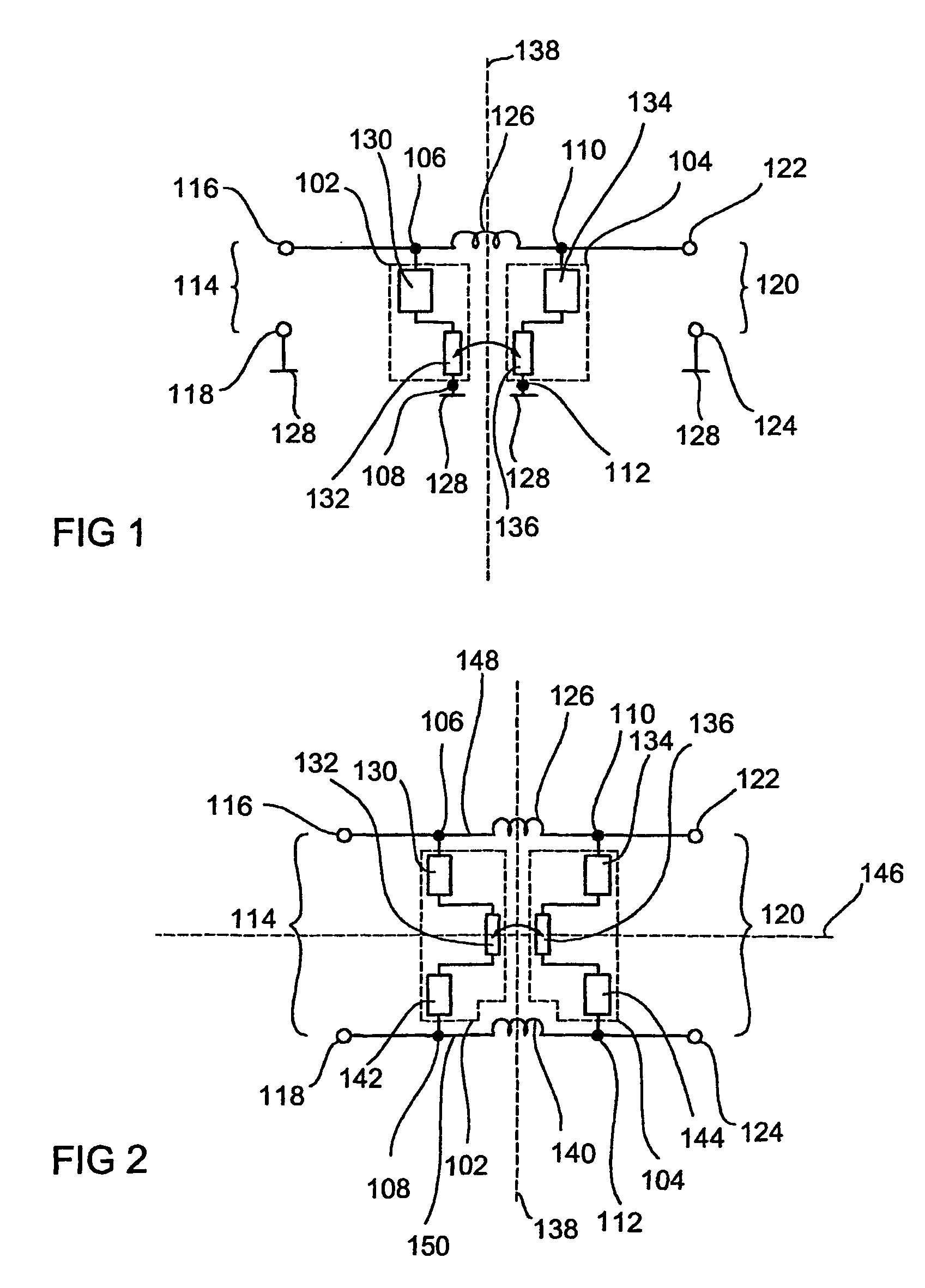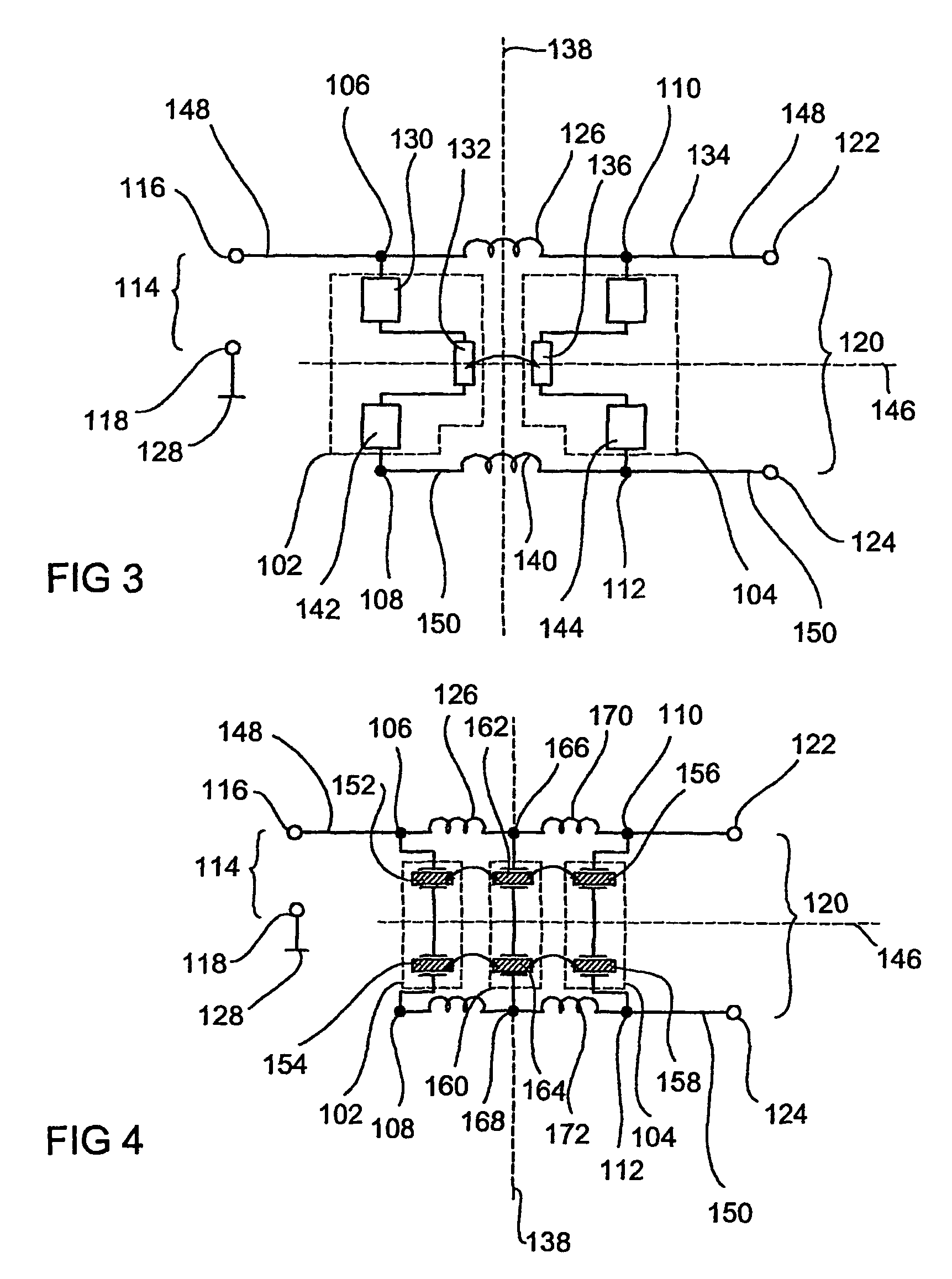Filter arrangement for balanced and unbalanced line systems
a filter arrangement and line system technology, applied in transmission, multiple-port network, electrical equipment, etc., can solve the problems of large number of unbalanced line systems used in practice, unbalanced circuits, power amplifiers and antennas implemented in an unbalanced technique, etc., to improve resonator filter arrangement, improve resonator filter performance, and high packing density
- Summary
- Abstract
- Description
- Claims
- Application Information
AI Technical Summary
Benefits of technology
Problems solved by technology
Method used
Image
Examples
Embodiment Construction
[0051]FIG. 1 shows a resonator band-pass filter according to a first embodiment of the present invention with an unbalanced input and output. The resonator band-pass filter includes a first resonator circuit 102 and a second resonator circuit 104. The first resonator circuit 102 is connected between a first node 106 and a second node 108. The second resonator circuit 104 is connected between a third node 110 and a fourth node 112. The resonator band-pass filter further includes an input port 114 including a first input port node 116 and a second input port node 118. Further, an output port 120 is provided including a first output port node 122 and a second output port node 124. Further, the resonator band-pass filter includes an inductive device 126, e.g. in the form of a coil, connected between the first node 106 and the third node 110.
[0052]In the embodiment shown in FIG. 1 the first input port node 116 is connected to the first node 106 and the first output port node 122 is conne...
PUM
 Login to View More
Login to View More Abstract
Description
Claims
Application Information
 Login to View More
Login to View More - R&D
- Intellectual Property
- Life Sciences
- Materials
- Tech Scout
- Unparalleled Data Quality
- Higher Quality Content
- 60% Fewer Hallucinations
Browse by: Latest US Patents, China's latest patents, Technical Efficacy Thesaurus, Application Domain, Technology Topic, Popular Technical Reports.
© 2025 PatSnap. All rights reserved.Legal|Privacy policy|Modern Slavery Act Transparency Statement|Sitemap|About US| Contact US: help@patsnap.com



